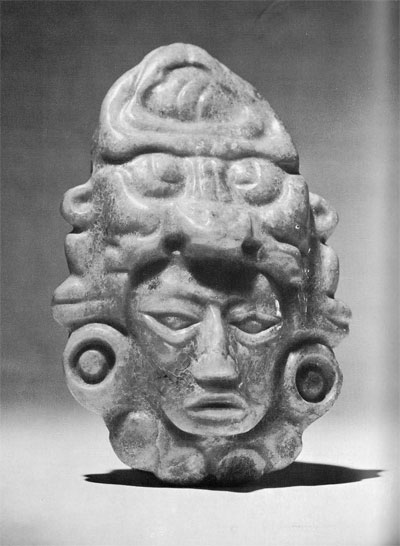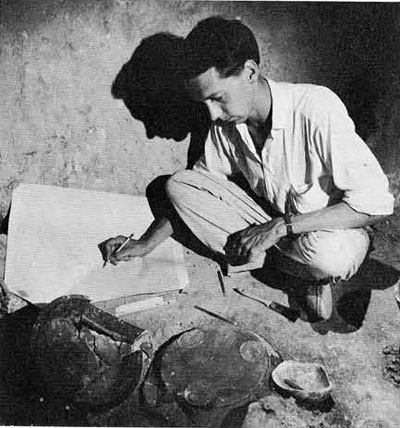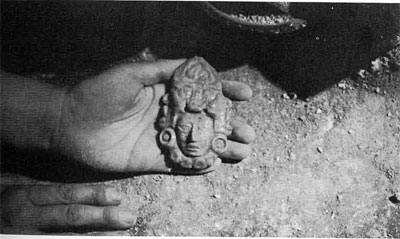 During the 1962 season at Tikal, field work included investigation of the West Plaza, a large ceremonial group immediately west of the Main Plaza and North Acropolis, the ceremonial center of the site. Excavation of Structure 5D-11, a roughly square truncated pyramid on the west side of the Plaza, revealed a tomb buried on the axis of the structure. Tombs so situated are a common feature at Tikal. This one, dated by its ceramic contents to Late Classic times and possibly no earlier than about A.D. 750, was noteworthy because it contained a pendant which is one of the finest jade carvings yet discovered in the Maya lowlands.
During the 1962 season at Tikal, field work included investigation of the West Plaza, a large ceremonial group immediately west of the Main Plaza and North Acropolis, the ceremonial center of the site. Excavation of Structure 5D-11, a roughly square truncated pyramid on the west side of the Plaza, revealed a tomb buried on the axis of the structure. Tombs so situated are a common feature at Tikal. This one, dated by its ceramic contents to Late Classic times and possibly no earlier than about A.D. 750, was noteworthy because it contained a pendant which is one of the finest jade carvings yet discovered in the Maya lowlands.
The Maya interest in jade was expressed in the grave goods by ear plugs, button-like flares encircling the head, wrist bands of beads, and the pendant which lay on the breast of the deceased where the pale green of the stone was dramatically contrasted by clinging red cinnabar, which had perhaps been sprinkled over the body during interment ceremonies.
On the face of the pendant is carved the sensitive, realistic portrait of a man adorned with large ear plugs, a necklace of heavy beads, and an elaborate headdress. The crossed eyes of the grotesque mask-headdress help identify it as the sun god “Kinich Ahau.” A biconically drilled transverse perforation at the level of the crossed eyes provided a means of suspension. That the piece may have been an heirloom at the time of placement in the grave is suggested by still visible traces of an effaced vertical inscription of four glyphs on the smooth reverse side. Of all the jade pendants yet recovered at Tikal, this is the only one executed in the style attributed to the Late Classic period.


